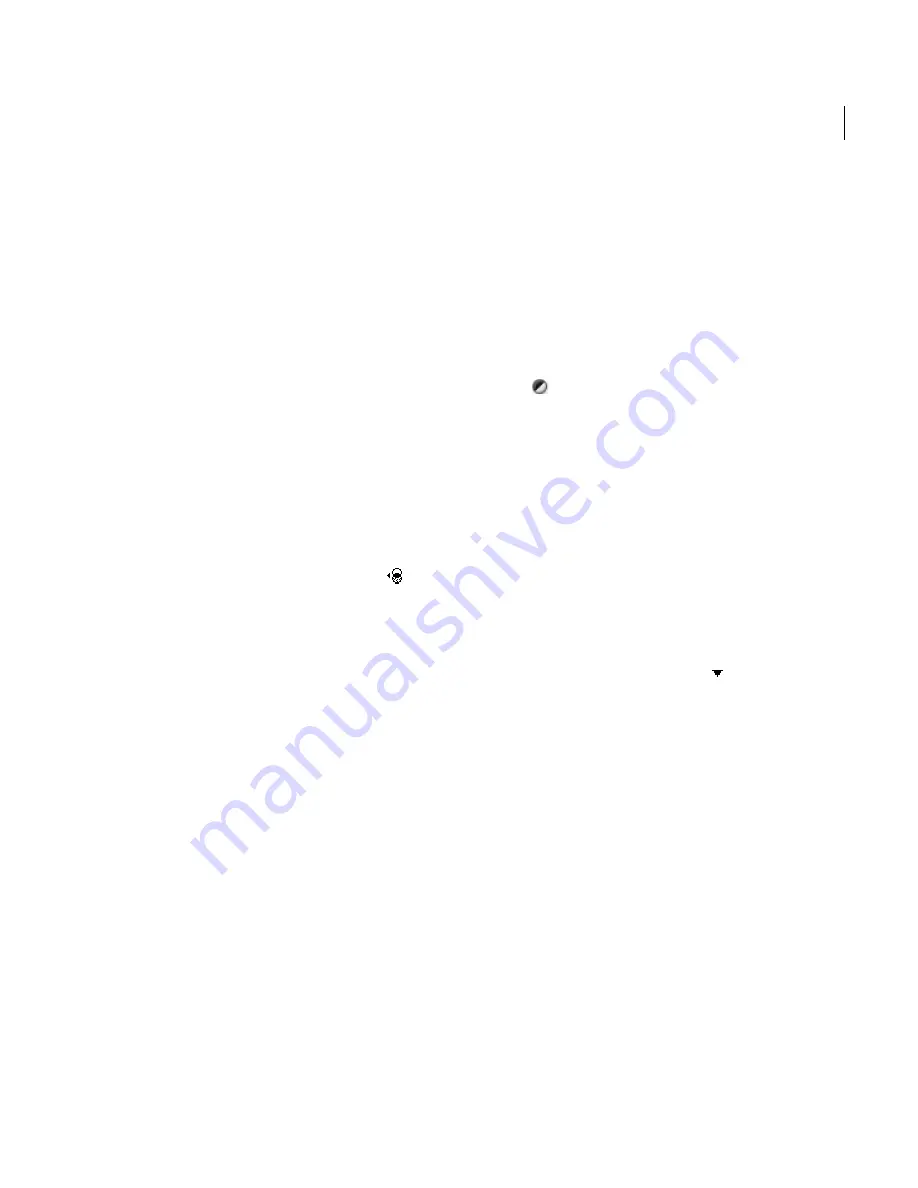
103
ADOBE PHOTOSHOP ELEMENTS 2.0
User Guide
Invert
Invert adjustment layers don’t have
options. (See “Using the Invert command” on
page 186.)
Threshold
Specify a threshold level. (See “Using
the Threshold command” on page 187.)
Posterize
Specify the number of tonal levels for
each color channel. (See “Using the Posterize
command” on page 188.)
If you chose the Group With Previous Layer
option in step 3, Photoshop Elements groups the
adjustment layer with the layer immediately below
it and the effect is confined to the group. To add
more layers to the group, press Alt (Windows) or
Option (Mac OS), and position the pointer over
the line dividing the bottommost layer in the
group with the next layer below it (the pointer
changes to two overlapping circles
), and then
click. For more information, see “Creating
grouped layers” on page 106.
About fill layers
Fill layers let you fill a layer with a solid color, a
gradient, or a pattern. Unlike adjustment layers,
fill layers do not affect the layers underneath them.
Creating fill layers
Fill layers have the same opacity and blending
mode options as image layers and can be
rearranged in the layer stacking order, deleted,
hidden, and duplicated in the same manner as
image layers. By default, fill layers take the name of
the fill type.
To create a fill layer:
1
In the Layers palette, select the layer you want
the fill layer to be above.
2
To confine the effects of the fill layer to a
selected area, make a selection.
3
Do one of the following:
•
Click the New Fill or Adjustment Layer button
at the bottom of the Layers palette, and
choose the fill type you want to create. (Note
that the first three commands in the menu are
fill layers, and the rest are adjustment layers.)
•
Choose Layer > New Fill Layer, and choose a fill
type from the submenu. In the New Layer dialog
box which appears, click OK.
4
In the [fill layer type] dialog box which appears,
set the options for the fill type you chose:
Solid Color
Specify a color. (See “Using the Adobe
Color Picker” on page 131.)
Gradient
In the Gradient Fill dialog box, click the
Gradient pop-up menu arrow to choose a
predefined gradient, or to edit the gradient in the
Gradient Editor, click the color gradient. (See
“Creating or editing gradient fills” on page 148.)
You can drag in the image window to move the
center of the gradient.
Set additional options in the Gradient Fill dialog
box as desired:
•
Style specifies the shape of the gradient.
•
Angle specifies the angle at which the gradient is
applied.






























